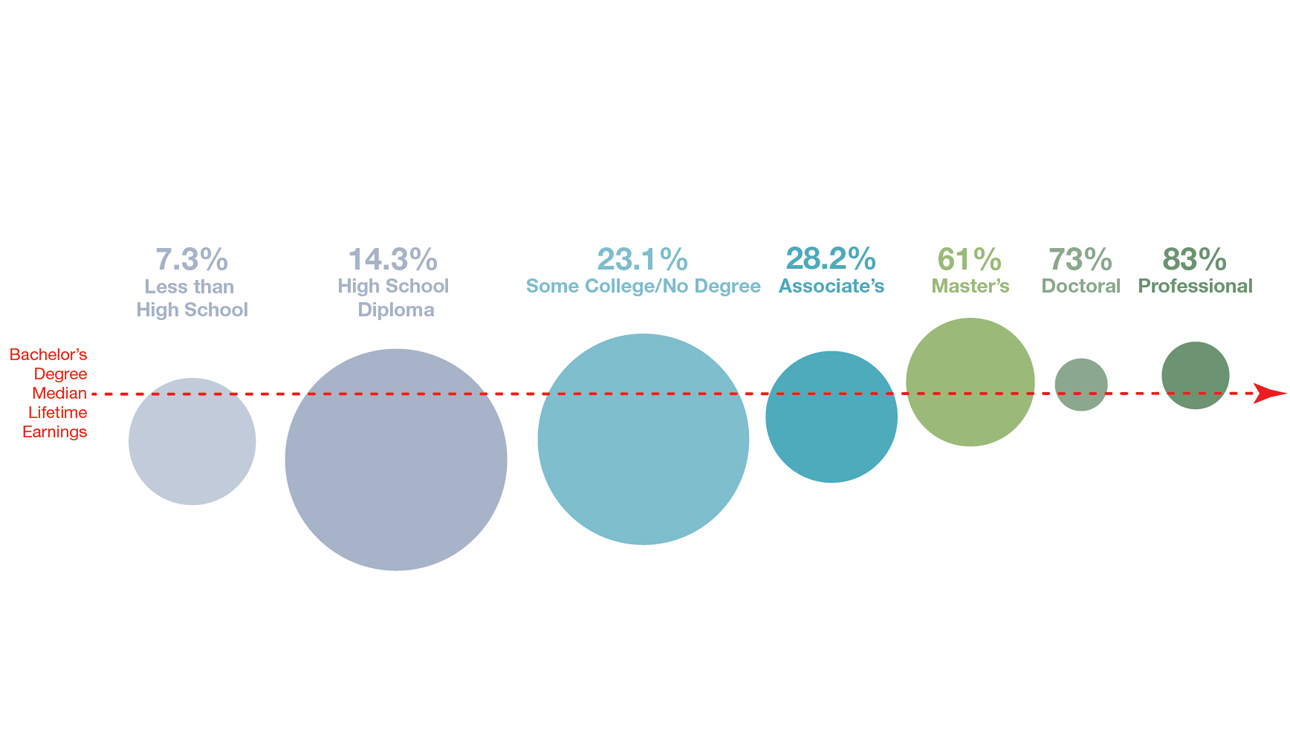

Illustration courtesy of Georgetown University
By Trevor Allison
Reporter
Many struggling undergrads have wondered if all the time and money spent on a four-year education is worth it. This might become a more legitimate concern to one who reads new statistics published by the Texas Workforce Commission on Jan. 19.
The report includes a section in which occupations in Texas are projected to grow and shrink proportionally the most by 2018, and which occupations will grow the most in total numbers.
Four of the seven largest job fields in 2018 are fast food workers, retail supervisors, customer service representatives and waiters/waitresses — none of which require college degrees.
In today’s poor job market, this may concern someone who is spending a significant amount of money to obtain a college degree. Many are concerned that there will not be enough jobs for everyone.
According to the Texas Higher Education Coordinating Board, students with a new bachelor’s degree have an unemployment rate of 8.9 percent. But for those with only a high school diploma, it is 22.9 percent.
“Throughout this economic downturn, workers with postsecondary education have fared much better than those with only a high school diploma,” Dominic Chavez, spokesperson for the Texas Higher Education Coordinating Board, said.
Chavez said that the oil-refining industry in the Gulf of Mexico is producing well-paying jobs that only require one- to two-year education or skill programs. But he also said this is a limited scenario. “While there are strong headwinds in the job market today, long-term, the investment in a four-year college degree will pay far more dividends than no college education,” Chavez said.
He also said that in the future, the workforce of the United States will require more education, not less. In 1973, 28 percent of jobs in the country required postsecondary education, a number projected to rise to 63 percent in 2018.
According to The College Payoff, a report published by the Georgetown University Center on Education and the Workforce, projections indicate there will be 3 million unfilled jobs requiring college degrees by 2018. “More education is always better,” Kevin Nall, associate director at Baylor career services, said.
The College Payoff reports that though some jobs may boast a higher starting salary without a four-year degree, the lifetime salary is most often higher for the person with more education.
The report also indicated that only 28.2 percent of people with an associate’s degree earn more than the median earnings for someone with a bachelor’s degree in their lifetime. Those with a bachelor’s degree will have more opportunities throughout their lives and will be able to keep up better in a changing world, Nall said.
He went on to say that the information published by the Texas Workforce Commission can be useful when reviewed with the right perspective. In showing which industries are growing and shrinking, a student can see what degrees would be most beneficial to have in the future, as well as which degrees may not be worth the time, money and effort.
Nall said this helps Career Services guide students toward areas that will be beneficial from a monetary standpoint, as well as a good fit for the student. Chavez highlighted the importance of planning for the future as soon as possible.
“With the cost of tuition skyrocketing, debt burden increasing and at least a temporary disparity between majors and job opportunities, it is critical for students to think about their future career opportunities earlier than perhaps previous generations,” Chavez said.





